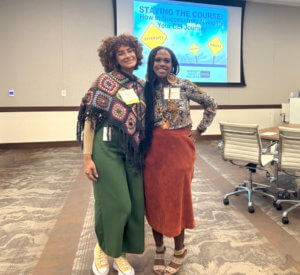As organizations seek to create a more diverse and inclusive workforce, they will need to learn and leverage new strategies to attract candidates for roles and industries for which they have historically not been recruited. Companies in all sectors understand the business benefits of diversity; the challenge is to make it happen. In this blog post, we will outline several strategies for attracting diverse pools of candidates for important positions in the life sciences, healthcare, and cybersecurity industries.
Partner with new and different organizations.
By forming partnerships with community and nationwide organizations that provide professional development and job opportunities for people from historically underrepresented groups, companies can tap into potentially large and influential groups of people whom they would otherwise not have access to. These organizations can help identify individuals whose experience, knowledge, and potential are exactly right for the position and can serve as long-term partners in the pursuit of talent beyond traditional networks.
Leverage platforms outside the conventional norm.
Organizations can enhance their efforts to attract diverse job candidates by leveraging the power and reach of new platforms outside of the conventional norm. LinkedIn is a terrific place to advertise for talent, but it’s not the only avenue for reaching diverse candidates. Companies and their human resources teams should post their job openings on multiple platforms including diversity-focused job boards, community group channels, and other industry-specific digital properties.
Craft inclusive job descriptions.
A common mistake that some organizations have traditionally made is writing job descriptions using language that can be implicitly or explicitly biased against certain groups. Inclusive job descriptions using neutral language ensure all potentially qualified applicants perceive an equal opportunity to secure the role, leading to an increased number of applicants from historically underrepresented communities.
Ensure fair and transparent screening and interviewing processes.
Another important strategy for attracting diverse job candidates is ensuring that the screening and interviewing process is conducted in a fair, equitable, and transparent manner. Organizations can use techniques such as anonymizing resumes, structuring screening and interview questions to eliminate biases, and using diverse hiring panels to ensure fairness and transparency throughout the process.
Request referrals from in-house diverse employees.
Companies should encourage and incentivize current diverse staff members to refer candidates from their communities and networks. Employee referrals can be an extremely effective technique for building diverse candidate pools since they serve as personal references of the candidate’s qualifications and character. Diverse employees may be aware of people from their communities who are qualified for the job but are not familiar with the company nor inclined to learn about the position due to the networks they have traditionally associated with.
Nurture Employee Resource Groups (ERGs).
Many diverse candidates are attracted to organizations that provide valuable networking opportunities and other resources to people like them through ERGs and are therefore more inclined to seek them out in their job search. Because they serve as sounding boards and support networks for sub-groups within an organization, ERGs provide members with a psychologically safe place to be themselves. Research also shows that ERGs improve employee retention rates and productivity, and 54 percent of organizations surveyed reported that their ERGs increased the sense of belonging and community among employees.
Implement Effective Employee Onboarding and Professional Development Strategies.
It is also paramount to implement effective employee onboarding programs and establish ongoing mentorship, sponsorship, and development opportunities. This comprehensive approach ensures the successful integration of diverse talents into the organizational fabric and plays a pivotal role in talent retention. Beyond retention, these initiatives contribute to cultivating a skilled and motivated internal talent pool. Employees, especially those from underrepresented communities, gain the guidance and support needed to navigate their career paths through close personal engagement with more experienced peers. Simultaneously, continuous development opportunities equip individuals with the skills and knowledge required for future promotion. In essence, a robust onboarding process coupled with sustained mentorship and development enhances diversity and inclusion and lays the foundation for a thriving internal talent pipeline poised for future growth and success.
Conclusion.
Research has shown that building a diverse and inclusive workforce in life sciences, healthcare, cybersecurity, and elsewhere, can provide significant social and financial benefits. In attracting diverse job candidates, organizations need to think strategically and intentionally about every step of the recruiting and hiring process. By partnering with community organizations, leveraging platforms outside of conventional norms, using inclusive language in job descriptions, eliminating unconscious bias to ensure fair and equitable hiring processes, inspiring diverse employee referrals, nurturing ERGs, and implementing effective onboarding and professional development strategies, organizations can successfully attract diverse candidates for important positions they are trying to fill. And when they do that, they will build a more diverse and inclusive company that is more productive and innovative, makes better decisions, and is more likely to retain top talent over time.

 Building a Toolbox for Success
Building a Toolbox for Success Ensuring DEI Efforts are Ingrained in Company Culture
Ensuring DEI Efforts are Ingrained in Company Culture


 Diversity recruiting strategies and benefits in healthcare, life sciences, and cybersecurity
Diversity recruiting strategies and benefits in healthcare, life sciences, and cybersecurity Improves Decision-Making and Problem-Solving
Improves Decision-Making and Problem-Solving



 Competition from Other Sectors
Competition from Other Sectors
 Strategies for Improving Talent Recruitment
Strategies for Improving Talent Recruitment